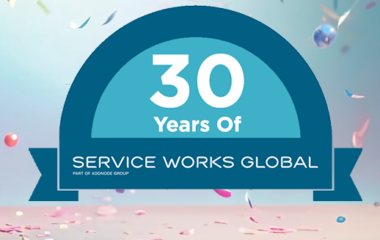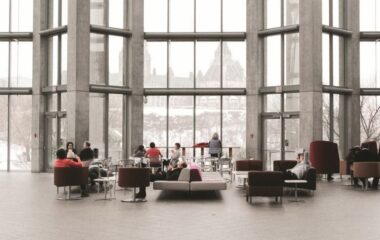Hazel Bedson, Marketing and Operations Director at SWG, is featured in iFM, to share advice on how digital models of historic buildings can act as a back-up in the case of extensive damage and provide immediate benefits to building and facilities managers.
The importance of preserving historic and cultural buildings has been recognised in the UK for more than 125 years. The first legislation was the Ancient Monuments Protection Act of 1882. Since then, other protective measures have been introduced, such as listed building status.
Much of the focus on historic buildings is around ongoing care and conversation, as well as strict planning rules around what changes can be made.
However, it’s equally important that we prepare for worst-case scenarios where a building might take extensive damage.
The most obvious example from recent times is the Notre Dame Cathedral which was victim to a huge fire in April 2019. The spire and wooden roof were areas that took the worst of the damage, while walls and other features of the cathedral were hit hard.
The restoration efforts are well underway, and architects have been using whatever they can to ensure the rebuild perfectly matches the old building. This has included using a digital model created by a lone academic, while there were even reports that the team behind the Assassin’s Creed video game might be able to supply a digital model that was used in a 2014 version of the game set in Paris.
These digital renderings are arguably better than nothing but are also imperfect. There are also very few buildings in the world that will have digital models like these to fall back on in the case of disaster.
The best solution for teams managing historic or culturally significant buildings – anything from cathedrals to museums – is to create a digital twin. This will not only be essential for emergencies but provide many other benefits to architects and building managers.
Digitising with 3D laser scanning
Old buildings will not have been built with building information modelling (BIM) software, of course, so 3D laser scanning is the best option to create a highly accurate digital version of a space.
Laser scans are built into a point cloud at high speed with such precision that almost perfect 3D images of external and internal surfaces and rooms can be produced. This includes not only room dimensions, but intricate details of designs and furnishings.
The 3D model can be shared with building managers, architects, historians – anyone who might require access. This is especially useful for maintenance and repair projects, as all stakeholders can work with the confidence that a digital model delivers.
Benefits for FM
A completed 3D model will give peace of mind, but the benefits don’t end there. Building managers can integrate the model with CAFM software so that updates to assets will be automatically updated in the 3D model.
This means that the model will always be up to date, which is not the case with drawings.
It also means that FMs can test changes in the digital model to see the impact on the building before going ahead. This makes changes more efficient and more cost-effective.
Case study – Nordiska Museet
SWG recently developed the basis for a digital twin of Sweden’s Nordiska Museet (Nordic Museum) building. This consisted of a complete 3D model with accurate interior and exterior measurements, in addition to relationship documents for remodelling and repairs. It ensures that this prestigious building, with its towers and pinnacles, sculptures and reliefs, spiers and high gables is documented digitally and can be preserved.

Leif Hed, director of properties for the Nordiska Museet, explained the rationale behind the project. “One of the reasons why we chose to digitise was that we lacked internal resources to manage our drawing archive. In addition, we lacked tools to easily search, read, measure and comment on the drawings. With the 3D laser scanning, we have received accurate digital models and drawings, something we previously lacked for some of our historic buildings. We have also improved the quality and ensured that we have very good data for future maintenance planning, contract writing and repairs.
“It was a eureka moment for us when it became clear how much benefit we’d get from the point clouds. Now, for example, we can ‘go into’ the technology rooms, read texts on installations and share the information with operating technicians and contractors. We can also get a good overview of the facade and make notes directly in the point cloud, which is of great benefit to suppliers when damage needs to be restored. It also means that daily operations have become simpler, safer and more economically efficient.
“Having digital copies of our buildings supports our sustainability goals and ensures that we can preserve our cultural heritage – in accordance with the National Antiquities Board’s guidelines – if, for example, a fire were to occur. We learned some lessons from the catastrophic fire in Notre Dame in 2019, where it became even more clear how important it is to have building information up to date and available. We have that now.”
Retrofitting BIM
Digital 3D models of buildings lay the foundation for an updated BIM model. These can be adapted to suit the user and show relevant information, from furnishings in a space to cleaning requirements.
So, while one reason to create a 3D model might be as ‘insurance’ in the case of a catastrophe, the fact is that the models have numerous uses as soon as they are developed.
For historic buildings that require an extra level of care and attention, 3D models can become a game-changing tool for the people in charge of those spaces.








